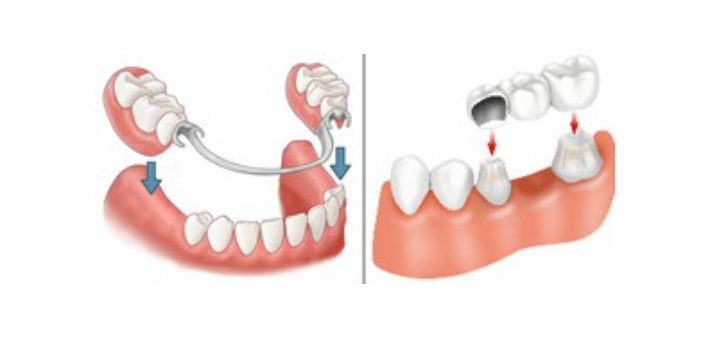What Are Removable Dental Bridges? Fix Tooth Gaps

Removable dental bridges, also known as partial dentures, are designed to fill in gaps created by missing teeth. Unlike fixed dental bridges, which are cemented into place and can only be removed by a dentist, removable bridges can be taken out and put back in by the patient. This type of dental bridge is a popular solution for individuals who have several missing teeth in a row, or for those who have teeth that are not strong enough to support a fixed bridge.
Removable dental bridges typically consist of a metal or plastic base that is attached to artificial teeth. The base is designed to fit snugly over the gums and remaining teeth, and is usually held in place by metal clasps or precision attachments. The artificial teeth are made to match the color, shape, and size of the surrounding teeth, and are designed to blend in seamlessly with the rest of the mouth.
One of the main advantages of removable dental bridges is their versatility. They can be used to replace multiple missing teeth, and can be designed to fit almost any shape or size of mouth. They are also relatively easy to clean and maintain, as they can be removed and soaked in a cleaning solution overnight.
However, removable dental bridges may not be the best solution for everyone. Some individuals may find them uncomfortable or awkward to wear, and they may require frequent adjustments to ensure a proper fit. Additionally, removable bridges may not be as stable as fixed bridges, and may shift or click when speaking or eating.
Despite these potential drawbacks, removable dental bridges remain a popular choice for many individuals. With proper care and maintenance, they can provide a comfortable and functional solution for tooth loss, and can help to restore confidence and self-esteem.
Types of Removable Dental Bridges
There are several types of removable dental bridges available, each with its own unique characteristics and advantages. Some of the most common types include:
- Partial dentures: These are the most common type of removable dental bridge, and are used to replace multiple missing teeth in a row.
- Overdentures: These are removable bridges that are designed to fit over existing teeth, rather than replacing them entirely.
- Immediate dentures: These are temporary removable bridges that are placed immediately after tooth extraction, and are designed to provide a functional and aesthetic solution until a permanent bridge can be created.
- Implant-supported dentures: These are removable bridges that are attached to dental implants, rather than the surrounding teeth. They provide a more stable and secure fit, and can be a good option for individuals with significant tooth loss.
Benefits of Removable Dental Bridges
Removable dental bridges offer a range of benefits, including:
- Improved oral function: Removable bridges can help to restore chewing and speaking abilities, making it easier to eat and communicate.
- Enhanced aesthetics: Removable bridges can be designed to match the color, shape, and size of the surrounding teeth, providing a natural and attractive appearance.
- Convenience: Removable bridges are easy to clean and maintain, and can be taken out and put back in by the patient.
- Cost-effectiveness: Removable bridges are often less expensive than fixed bridges, making them a more affordable option for many individuals.
Potential Drawbacks of Removable Dental Bridges
While removable dental bridges can be a great solution for tooth loss, there are some potential drawbacks to consider:
- Discomfort: Some individuals may find removable bridges uncomfortable or awkward to wear, especially during the initial adjustment period.
- Stability: Removable bridges may not be as stable as fixed bridges, and may shift or click when speaking or eating.
- Maintenance: Removable bridges require regular cleaning and maintenance to ensure a proper fit and function.
How long do removable dental bridges last?
+Removable dental bridges can last for many years with proper care and maintenance. On average, they can last for 5-10 years, although some may need to be replaced sooner due to wear and tear.
Can removable dental bridges be adjusted?
+Yes, removable dental bridges can be adjusted to ensure a proper fit and function. This may involve adjusting the metal clasps or precision attachments, or relining the base to improve the fit.
Are removable dental bridges suitable for everyone?
+Removable dental bridges may not be the best solution for everyone. Individuals with significant tooth loss, gum disease, or other oral health issues may require alternative solutions, such as fixed bridges or dental implants.
Conclusion
Removable dental bridges can provide a comfortable and functional solution for tooth loss, helping to restore confidence and self-esteem. With proper care and maintenance, they can last for many years, and can be a cost-effective alternative to fixed bridges. However, it’s essential to consult with a qualified dentist or prosthodontist to determine the best type of bridge for your individual needs, and to ensure a proper fit and function.

